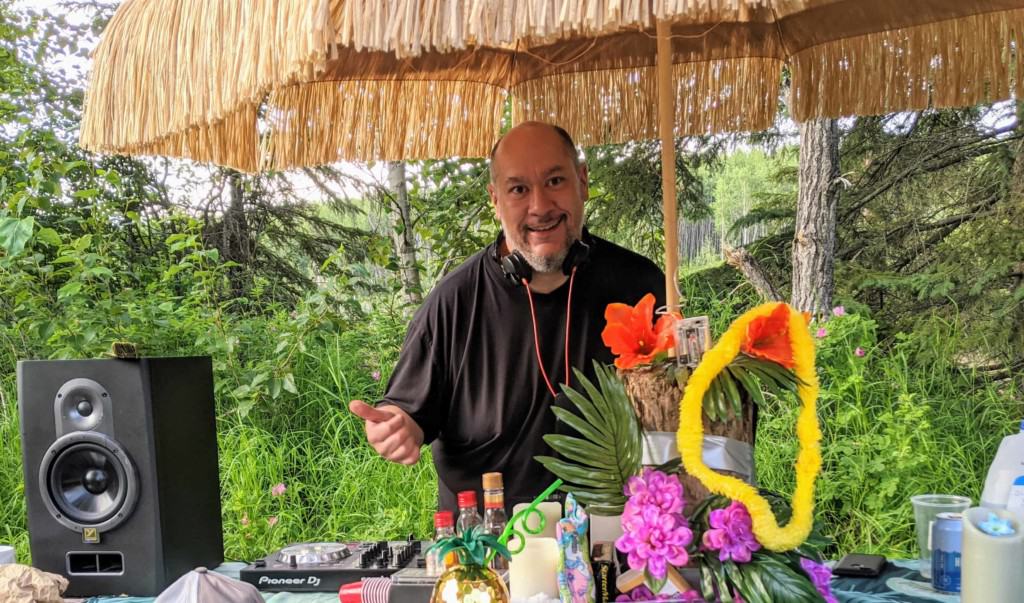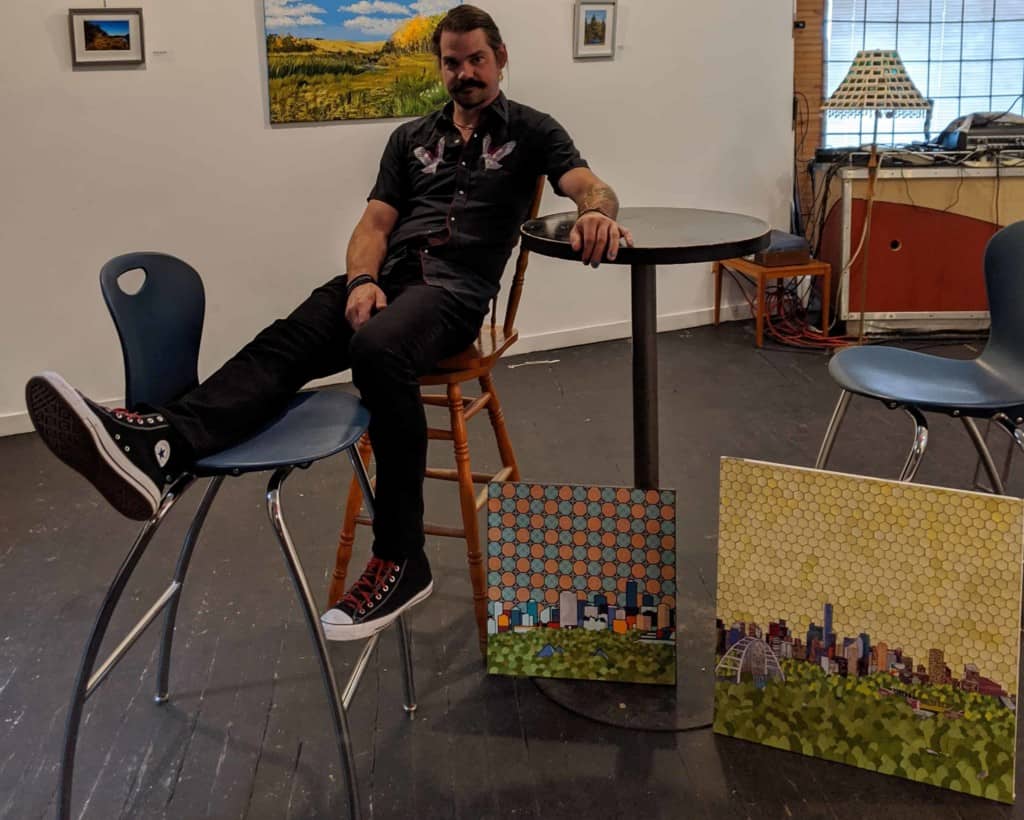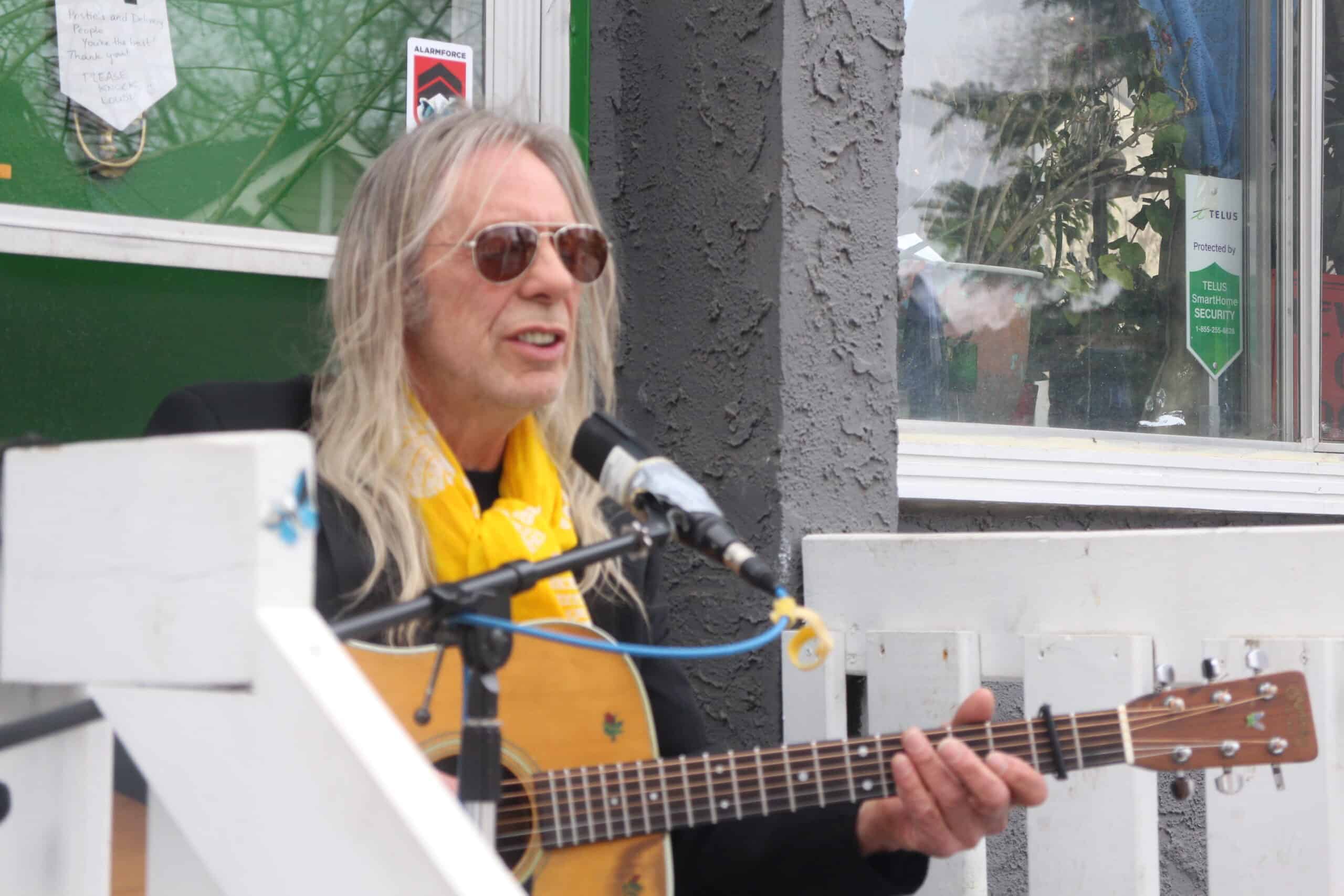This was the summer a DJ saved my life
Art is essential to our well-being during the hardship of a pandemic
In mid-June, Singapore’s The Sunday Times listed artists as number one on a survey of ‘the top five non-essential jobs’.
Yet art has become a crucial comfort during the lockdown. Known for their creativity, our local artists have had to adapt.
“I had an idea to do a piece but I knew it was going to be a marathon, so I put it off for a year,” says Mark Elliot Muz, visual artist, musician, and co-owner of The Aviary. “Self-isolating was the perfect time—I was able to treat it like a full-time job. One day I spent 17 hours cutting paper.”

Near the beginning of the lockdown, my tenant John Armstrong, event producer, agent, manager, publicist, and musician, approached me with the idea of having a porch concert with proper physical distancing.
Armstrong has now produced dozens of porch concerts, featuring musicians like Bill Bourne, Kevin Cook, Steven Johnson, Tom Roschkov, and Dana Wylie. He hopes to present a modified version of his Sasquatch Festival in late August or early September. “If you can’t tour and there can’t be touring artists coming through for big shows, there will likely be more demand for small shows by local artists. Adapt to that,” Armstrong says.

“Something that I realized very soon after everything shut down is that, as a performer with young children, going out and playing has come to have a vital function in my life—as a sort of release valve,” says Wylie, a veteran folk singer.
She calls the pandemic “a much-needed wake-up call” bringing the “precariousness of being an artist into sharp relief, which has made me want to advocate more for those in our communities who are truly vulnerable.” A basic income guarantee is one such example.
“There’s a silver lining in COVID land, I think,” says Kristy Nanise, also known as The Flask-strapped Poet. “Online shows bring in more exposure because people are at home on their phones and computers most of the time and will tune in.”

The downside is the lack of a live audience. Near the end of June, North Country Fair and Starlite Room hosted a live broadcast mini festival. During her performances, Nanise normally feeds off a crowd’s energy, but social distancing and mask wearing made it difficult. “So I feel like I bombed a little, I got nervous and too inside my head.”
Catherine Owen, a local poet, agrees. “Engaging with an audience is a massively important part of being a poet to me. Poetry is an aural form and once you bring your book to listeners you have completed the circle.”
Lorraine Shulba, a local painter and illustrator, has been selling large prints of her work to adorn backyards. “We have to make our own magic and adapt in life to survive.”
Recently, a small group of my friends did just that. We set up a tiki camp with an outdoor dance floor, and our friend DJ Diabolik spun tunes. As we danced and laughed under the stars, I felt like myself for the first time since March.
It was essential.
Featured Image: When you can’t go to the music, sometimes the music comes to you. Bill Bourne plays on the author’s front step. | John Armstrong







